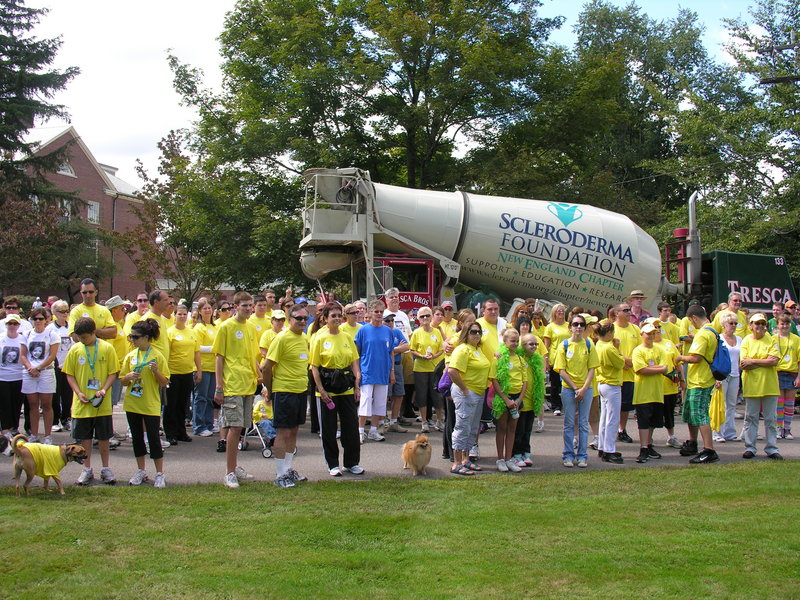PORTLAND — Spring is in the air, and people have cleaning their sneakers to do some walking. So, why not take a walk for a cause?
The first “Stepping Out to Cure Scleroderma” walk-a-thon is scheduled for May 15. Organizer Lori Chason hopes the walk will raise funds and awareness for a disease she has been living with for six years.
Scleroderma, a chronic often progressive autoimmune disease, causes the body’s immune system to attack its own tissues. For Chason, this leads to extreme fatigue, narrowing of the esophagus, stomach problems and nearly constant body aches and joint pain. While those are her symptoms, she said it effects everyone differently.
Tom Curran, executive director at the Scleroderma Foundation of New England, said the symptoms are a result of excess collagen production in the body. Those with external symptoms experience a hardening of the skin, while internally, people experience strangled organs, such as Chason’s tightening of the esophagus.
“Some people have mild, other people severe, symptoms,” Curran said. “It’s hard to diagnose. Part of the awareness is to also increase awareness among the medical community.”
In a recent support group meeting, Curran said a woman had gone undiagnosed because the dermatologist she was receiving treatment from did not know of scleroderma.
If this walk helps just one person, Chason said she will be satisfied. She leads a support group that meets the fourth Monday each month, but has only six people regularly.
“I’m honestly hoping one person will see it and go (to the walk) and get information, and they might get help. Find a doctor or a person to talk to,” Chason said. “It’s a lonesome disease and no one to talk to about it.”
She calls it “lonesome” because it is a rare disease, effecting mostly women. In the country, Curran said there are about 250,000 people with “full-blown” scleroderma. If you add people experiencing mild symptoms, he said that number is closer to 900,000.
Debra Lehouillier of Auburn said the support group Chason leads is very helpful.
“You can relate to each other,” even if the symptoms they’re experiencing are not the same, Lehouillier said.
Diagnosed in 1992, her first symptoms included Raynauds phenomenon, a discoloration of the fingertips. Lynn Beaudin, of Monmoth experienced the same thing, and while she thought something was wrong she did not pursue care immediately.
“I’m thinking there are a lot of people out there that might have it and think there might be something wrong, but they don’t get involved to find out,” Beaudin said, adding she has met many doctors who do not know about scleroderma.
Due to the lack of awareness and prevalent diagnosis, Curran said scleroderma does not receive the attention and grant funding needed to find the cause and a cure. The foundation’s mission is not only to raise awareness, but also raise money for this research.
“There is treatment for aspects of it…but it’s not a cure. It’s living with it as comfortable as possible,” Curran said.
“At first, I couldn’t get out of bed,” Chason said, but through medicine adjustments and regular visits to dilate her esophagus, she is doing better.
With walks scheduled throughout New England during the next few months, most are on their inaugural year. But all have been started up by someone who has scleroderma, or by family members of those with the disease.
“This chapter has been able to give $150,000 for each of the past three years. That comes from people who come to walks and make generous donations,” he said.
Staff Writer Emma Bouthillette can be contacted at 791-6325 or at: ebouthillette@pressherald.com
Send questions/comments to the editors.


